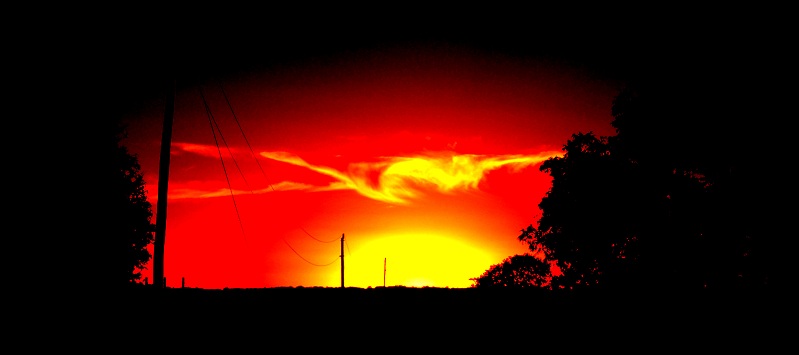
Every outdoor enthusiast should have at least a basic idea of how weather works and be able to make short-term predictions.
Long before meteorologists had sophisticated technology to help them predict the weather, people made forecasts based upon their observations of the sky, animals, and nature. The information related to the predictions was passed down from one generation to the next in the form of rhymes, anecdotes, and adages, commonly know as weather proverbs.
The purpose of the proverbs was to instruct farmers, sailors, military leaders, and others on how to forecast the weather. The poetic nature of the proverbs made them easier to remember.
While weather proverbs often don’t work, proverbs relating to the condition of the atmosphere, the appearance of the sky, the character and movements of the clouds, and the direction and force of the winds are, for the most part, amazingly accurate.
Here are five such proverbs and the scientific logic behind them:
Proverb #1: Red sky at night, sailor’s delight. Red sky in the morning, sailors take warning.
The logic: In his book The Happy Camper: An Essential Guide to Life Outdoors, outdoor expert Kevin Callan sums up the logic behind the most common proverb:
What it all means, basically, is that dry dust particles are in the atmosphere and can easily be seen during sunset and sunrise. Most storms move from west to east. So, with the sun setting in the west, the red sky at night usually indicates dry weather because dust particles are being pushed toward you. With the sun rising in the east, the red sky in the morning indicates that the dust particles are being pushed away by an approaching low-pressure front.
Proverb #2: The higher the clouds, the better the weather.
The logic: Higher clouds indicate dryness of air and higher atmospheric pressure. When both of these conditions are present, the weather is usually fair.
Proverb #3: When smoke descends, good weather ends.
The logic: In Camping’s Top Secrets, veteran camping consultant Cliff Jacobson explains how the smoke from your campfire can predict impending rain. He states, “If it hangs low (a function of low pressure) to the ground, rain is on the way. If it rises into a nice vertical column (high pressure), count on good weather.”
Proverb #4: When the wind is out of the east,’tis not good for man or beast.
The logic: BananaWind accounts for this by explaining that in the Northern hemisphere, a counterclockwise shift in wind usually brings rain, while clockwise movement indicates fair weather.
Proverb #5: Rainbow in the morning, shepherds take warning.
The logic: A rainbow in the morning is caused when light from the rising sun in the east is reflected off water droplets in the west. Since storms travel from west to east, this phenomenon could signify an approaching storm.
What do you think? Are these proverbs just a bunch of meaningless wives’ tales or can they in fact help you predict the weather? Scientific reasoning suggests that these adages should hold up under scrutiny. Test their validity for yourself; the next time you experience one of the conditions, make a prediction based on one of the weather proverbs. Who knows, with a little practice, you might become more accurate than your local meteorologist.
Image by Billie McDaniels

 Your Privacy Choices
Your Privacy Choices
 The
The